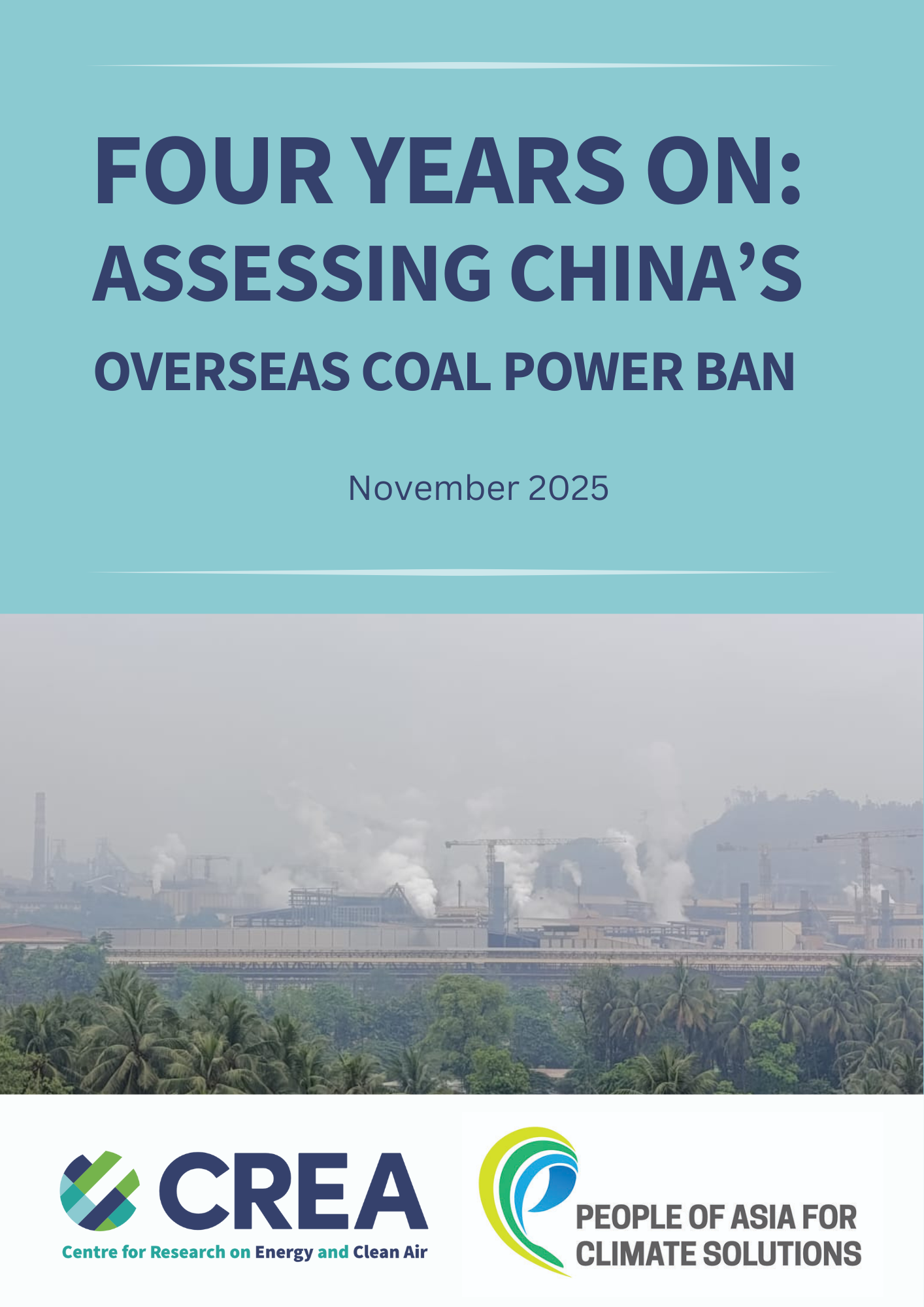More than four years after President Xi Jinping pledged to end China’s financing of overseas coal projects, the annual assessment from the Centre for Research on Energy and Clean Air (CREA) and the People of Asia for Climate Solutions (PACS) finds that while some progress has been made, the rise of privately owned off-grid captive coal projects for industrial needs, particularly in Indonesia and Africa, is a growing concern.
While many coal plants have been cancelled, others continue to move forward, especially privately funded, off-grid projects for industrial use, revealing that implementation gaps and loopholes persist.
The assessment analyses five categories — cancelled; pre-permitted; permitted; under construction; operational — and adds a new project category that has emerged this year for idle plants that could return to service at any time without entering a formal permitting process: mothballed.
As of July 2025, the total capacity of overseas coal projects in the pipeline has dropped to 31.4 gigawatts (GW), down from nearly 50 GW in 2024. Cancellations have also accelerated, after a slowdown in 2024, with 16.4 GW of new capacity cancelled in 2025. Since the 2021 pledge, a total of 59.3 GW of projects have been cancelled, which is equivalent to 6.1 billion tonnes of avoided lifetime carbon dioxide (CO₂) emissions.
Despite these positive trends, operational projects have grown by 4.1 GW in 2025. Most of these projects were under construction in 2024 or about to be commissioned, demonstrating that once a plant enters the construction stage, it is unlikely to be cancelled.
Although the pace of construction has slowed in 2025, 12.1 GW of capacity remains under construction across 14 projects. These consist largely of captive coal projects in Indonesia, India, Laos, Zimbabwe, and Zambia. These are off-grid facilities that serve industrial needs and are owned by private Chinese companies. This loophole casts a growing shadow over the progress made in ending China’s overseas coal investments. See report annex for further details in the field studies.
To-date, China’s overseas captive coal projects have added an estimated 1.5 billion tonnes of lifetime CO₂, which comes to almost half of all emissions currently in operation. The current projects under construction could add a total of around 3.4 billion tonnes of potential lifetime CO₂ emissions upon completion.
Policy recommendations
CREA and PACS propose the following policy recommendations to expedite the implementation of President Xi’s 2021 pledge to phase-out China-backed overseas coal projects, including but not limited to:
- The pledge should explicitly cover captive coal. Approvals and financing should require renewable or hybrid alternatives, best available technology (BAT), environmental standards, and time-bound retirement plans.
- The prioritisation of financing redirected towards renewable energy investments: solar, wind, hydro, storage, and grid modernisation. In host countries with pre-permit projects, targeted support for project preparation, land and transmission access, and power market reforms can accelerate renewable pipelines and reduce coal dependence.
- Support for host country transition strategies. China and international partners should expand technical and financial assistance for national transition plans, cooperating with local authorities to help ensure that the shift away from coal also supports economic resilience and local employment.
- Establishing a dedicated coordinating agency. Since the 2021 pledge, China has yet to designate a body responsible for its enforcement. A dedicated agency with strong coordination and regulatory powers is needed to guide implementation, ensure accountability, and intervene in irresponsible or illegal operations when necessary.
